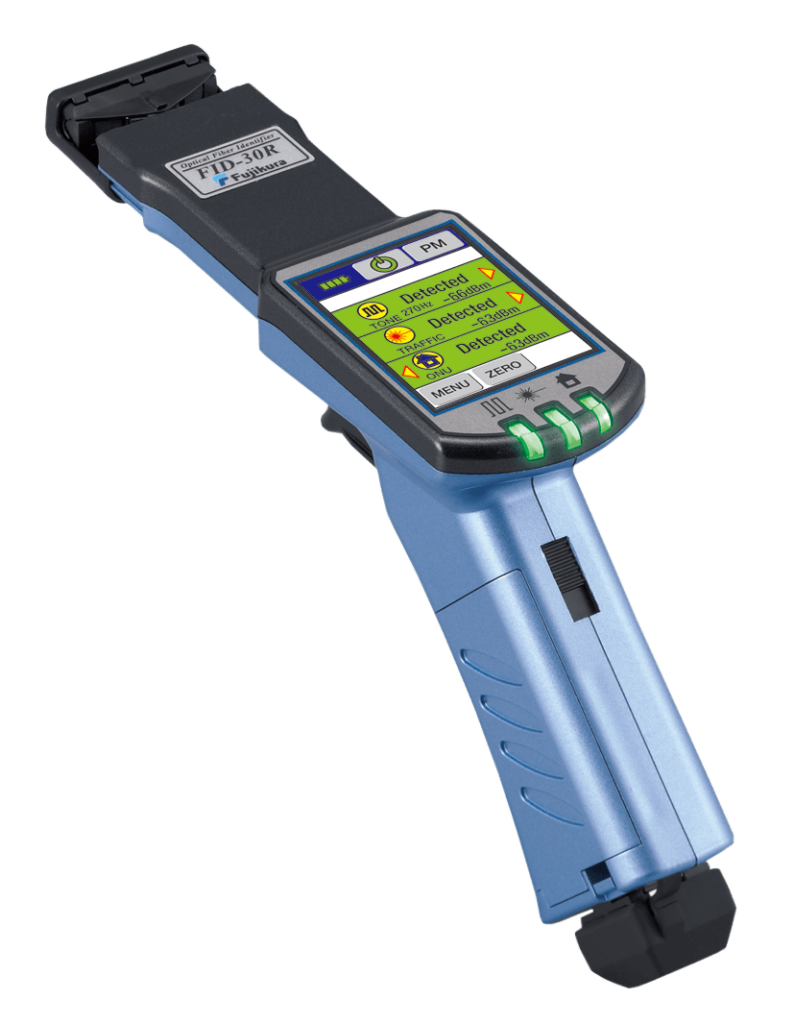The Role of an Optical Fibre Diameter Analyser in Quality Control
The Role of an Optical Fibre Diameter Analyser in Quality Control
Blog Article
Enhance Your Fiber Optic Projects With an Effective Size Analyser
The assimilation of a reliable size analyser into fibre optic jobs works as an essential aspect in achieving accuracy and consistency. By assisting in exact size measurements, these analysers not only enhance the quality of installments but also alleviate possible compatibility concerns among elements. The advanced abilities of contemporary analysers improve data collection and top quality control procedures. As we check out the vital functions and advantages of these tools, it comes to be apparent exactly how they can change task outcomes and ensure adherence to industry requirements. What continues to be to be gone over is exactly how to efficiently execute these analysers in your existing workflows.
Significance of Size Measurement
Gauging the size of fibre optic cables is an important job that makes certain optimal efficiency and reliability in interaction systems. Exact size dimension is important for different reasons, primarily for preserving signal stability and lessening loss. A wire's size straight affects its ability to transfer light successfully; variances from the defined size can cause boosted depletion, which influences the general efficiency of the network.
Furthermore, accurate measurement is important during the setup and upkeep of fibre optic systems. An inappropriate fit in between wires and adapters can lead to signal deterioration or total failure of communication web links. By making certain that sizes are within specified resistances, service technicians can improve compatibility between elements, leading to enhanced system reliability.
On top of that, diameter measurement plays a significant role in quality assurance throughout manufacturing. Uniformity in the diameter of fiber optic cables is vital for making sure uniform efficiency across different sets. optical fibre diameter analyser. This consistency assists manufacturers maintain industry criteria and cultivates self-confidence amongst end-users
Features of an Efficient Analyser
A reliable analyser for fibre optic jobs have to include a number of key features that boost accuracy and functionality in size measurement. First of all, high-resolution optical sensing units are crucial for accurate diameter readings, allowing individuals to identify also the smallest variants in fibre thickness. These sensors should be matched by advanced calibration systems, ensuring regular performance across different problems and products.
Second of all, a straightforward interface is crucial for facilitating ease of procedure. This consists of instinctive software that permits seamless information input and result, together with visual representations of the dimensions taken. A mobile layout improves functionality in different field atmospheres, making it much easier to conduct assessments on-site.
In addition, the analyser should support several measurement modes, fitting different fibre types and applications. The capacity to store and get historic information is one more important attribute, enabling customers to track efficiency with time and make notified decisions.
Benefits for Fibre Optic Projects
Applying a size analyser in fiber optic projects offers considerable benefits that significantly boost job performance and quality. Among the primary benefits is the capacity to make certain exact measurements of fiber size, reference which is essential for keeping ideal performance in fibre optic systems. Precise diameter analyses assist in the identification of incongruities that might cause indicate degradation or loss, hence guaranteeing high-quality transmission.
Additionally, making use of a size analyser streamlines the quality assurance procedure. By automating measurement tasks, task teams can minimize the time invested in manual inspections, causing visit their website faster task conclusion and decreased work costs. This effectiveness likewise enables for more rigorous screening protocols, causing boosted item integrity.
Moreover, uniformity in fibre size measurements promotes compatibility with other fiber optic components, minimizing the threat of installation mistakes and improving overall system efficiency. The consolidation of a size analyser not only help in keeping sector standards yet likewise promotes confidence in job deliverables.
Assimilation Into Existing Process
Integrating a diameter analyser into existing operations can dramatically enhance the functional performance of fiber optic tasks. By perfectly integrating this modern technology, groups can attain exact measurements that are vital to keeping the integrity and efficiency of fiber optic systems. This integration enables real-time data collection and evaluation, which can be essential throughout the production and installation phases.
In addition, the ability to automate diameter measurement processes decreases the potential for human mistake, making sure consistent quality assurance throughout the job lifecycle. The information generated can be quickly shared across platforms, facilitating collaboration among engineers, specialists, and job managers. This availability improves decision-making and speeds up job timelines.

Choosing the Right Size Analyser
When official source picking a size analyser for fibre optic jobs, it is important to consider several vital elements that straight effect measurement precision and operational performance. First, the resolution and accuracy of the analyser should align with the particular needs of your task. Greater resolution instruments can spot minute variants in diameter, which is crucial for making sure optimal performance in fiber optic systems.
For jobs with tight deadlines, a size analyser that supplies quick information purchase can significantly improve performance. Additionally, consider the analyser's compatibility with existing systems and software application.
Another essential aspect is the array of sizes the analyser can fit. By thoroughly evaluating these variables, you can choose a size analyser that improves the efficiency and precision of your fiber optic projects.
Verdict
In final thought, the assimilation of a reliable diameter analyser is paramount for improving fibre optic jobs. Exact diameter dimensions guarantee optimal efficiency and reliability while decreasing installation mistakes. Advanced functions facilitate real-time data collection and compliance with sector standards, inevitably raising the high quality of deliverables. By focusing on the option and execution of a suitable analyser, job effectiveness is dramatically boosted, leading the way for effective results in fibre optic applications.
A cable's diameter straight affects its capability to transmit light successfully; deviations from the defined diameter can lead to boosted depletion, which affects the general performance of the network.

Report this page